Maranjab Desert: A Spectacular Natural Attraction in Iran
Deserts are amongst the best places in the world for adventure. From treks across incredible landscapes, to gazing at the stars on a pristinely clear night.
Typically people think of desert as vast emptiness, but if you delve into the Maranjab desert, you'll discover dramatic mountain ranges, diverse multi-coloured landscapes, unique wildlife, sweeping sand dunes, and mesmerizing salt lakes, all topped off with some of the starriest skies you'll ever see.
With its serene tranquility, Maranjab desert is one of the most spectacular natural attractions in Iran and a haven for desert trekking aficionados and those seeking solace and adventure. Join us, as we delve into some Maranjab desert facts and unveil some secrets of this remarkable desert.
About Maranjab Desert
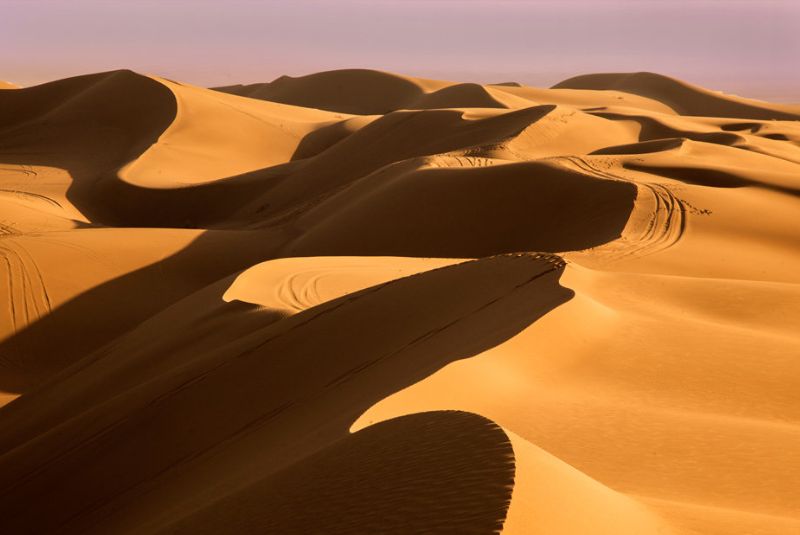
Maranjab Desert is one of the most fascinating and pristine deserts in Iran. This desert is located at an altitude of 850 meters above sea level. Its name is derived from the caravanserai and qanat (water canal) belonging to the Safavid era, which are located in the region.
However, some believe that the harshness of life in this area, the scarcity of water, and the hardships people endured to find fresh water are the reasons behind the naming of Maranjab Desert.
It is said that the name of this desert originates from three words: "mard" (man), "ranj" (hardship), and "ab" (water), which have been abbreviated over time and are now pronounced as "Maranjab."
With its captivating towering sand dunes, lush palm groves, and salt lake, this desert has become one of the top destinations for dessert enthusiasts in recent years, attracting numerous desert explorers throughout the year.
| Suggestion: Why Explore Iran's Ecotourism Wonders?
Vegetation and Wildlife in Maranjab Desert
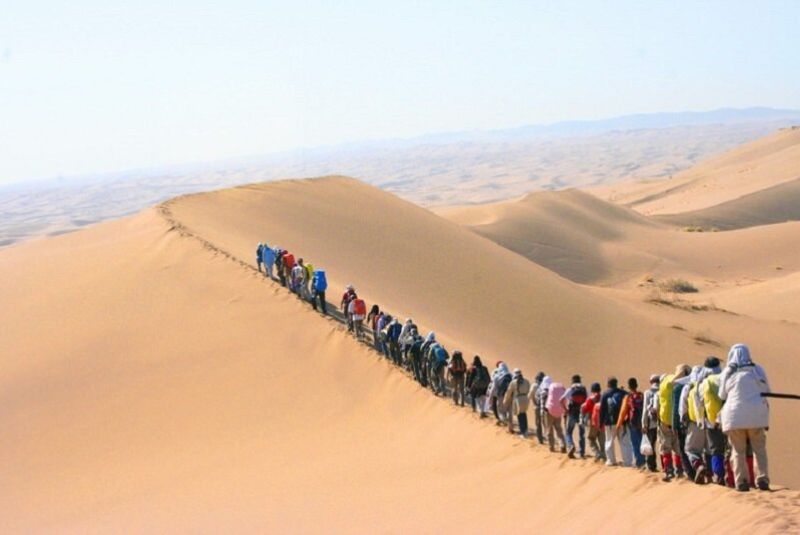
You might imagine that Iranian deserts, especially the Maranjab Desert, are devoid of any life. However, when you set foot in this sandy sea, you will encounter various plants and animals.
The vegetation and wildlife of Maranjab Desert exhibit good diversity. Among the animal species in this region, one can mention foxes, wolves, sand cats, hedgehogs, eagles, sunbirds, falcons, sand gazelles, various snake species, Eastern hares, and hyenas.
Interestingly, even a herd of cheetahs has been spotted in this area. The plants of this region include salt-tolerant plants adapted to desert climates such as tamarisk, salt cedar, saltwort, tumbleweed, and camelthorn.
| Read more: Iran's Wildlife - A Nature Lover's Guide + Pics
Maranjab Desert Attractions
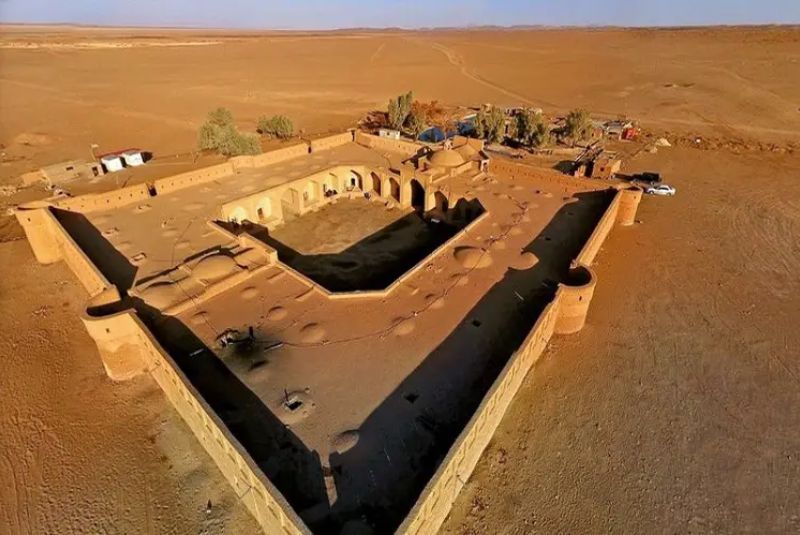
The captivating attractions of the Maranjab Desert include astonishing natural phenomena and highly fascinating historical sites. We suggest visiting the following attractions during your trip to this beautiful desert:
Masileh Salt Lake
Masileh Salt Lake, also known as Aran and Bidgol Salt Lake, is one of the most remarkable attractions of the Maranjab Desert and one of the most beautiful salt lakes in Iran, located in the central desert.
Tourists are amazed by the beautiful scenery of Masileh Salt Lake, especially during sunset. The reflection of the sky in the shallow water of this lake is one of the most beautiful natural phenomena in the region.
To visit this lake, you need to travel to Aran and Bidgol, which is about 35 kilometers away. Masileh Lake is located in the Reyg Desert, near the borders of Isfahan, Semnan, and Qom provinces.
Sargardan Island, Isfahan
If you visit Masileh Salt Lake, you will also see a large island called Sargardan Island located in the heart of the lake. In the past, it was believed that this island was floating and moving; however, today we know that this belief was merely an optical illusion, and Sargardan Island remains stationary in its place.
Most of the time, Masileh Lake is dry, and only salt crystals with a mesh-like texture are visible on its bed; however, after rainfall, a very shallow layer of water sits on the salt, transforming the salt flats into a lake. During these times, Sargardan Island becomes very picturesque.
Maranjab Caravanserai
The Maranjab Caravanserai dates back to the Safavid era and was built during the reign of Shah Abbas Safavi in 1604. Maranjab Desert was one of the busiest routes for access to the cities of Isfahan and Mashhad at that time.
It's interesting to note that Maranjab Caravanserai used to be very busy and bustling until the early Pahlavi era, but with the construction of roads throughout Iran, it gradually became quieter.
Before the 1979 Revolution, the restoration of this 3,500-square-meter caravanserai was initiated by the Cultural Heritage Organization of Kashan and the University of Tehran, but revolutionary movements led to the cancellation of this project.
Fortunately, in 1999, the Cultural Heritage Organization purchased Maranjab Caravanserai and restored it once again. Finally, in 2005, this historic caravanserai was built with 29 cozy and traditional rooms and was registered as a national monument of Iran. Today, it is possible to stay in this caravanserai by reserving its historical rooms.
Kavir National Park
Kavir National Park, covering an area of approximately 6,700 square kilometers, boasts remarkable botanical and zoological diversity. In total, 34 mammal species, 155 bird species, and 34 reptile species inhabit this area, making Kavir National Park also known as the "Little Africa."
Rainbow Mountains and Qasr-e Bahram Caravanserai are among the most attractive sights in this region. To reach Kavir National Park, you need to travel 50 kilometers south from Maranjab Caravanserai in the northern Band-e Rig Desert and south of Masileh Salt Lake to reach the Gavkhooni Wetland.
| Discover: Iran's Top 14 National Parks Every Tourist Should Visit
Dastkand Well
Dastkand Well is another prominent attraction of the Maranjab Desert, highly esteemed and respected by the locals. Unlike other lakes in this desert, Dastkand Well has sweetwater.
The water of this well becomes sweet after passing through sand filters, with only a very small percentage of salt present. Various stories are told about this well. One of the most famous stories being that Imam Reza dug this well to provide sweet water for his caravan during their journey from Iraq to Mashhad.
Sand Dunes
The sand dunes offer a very beautiful landscape. If you reach this area at sunset, the breathtaking scenery of the sand dunes will amaze you. Moreover, climbing these dunes while sinking your feet into the sand up to your knees is an exciting activity that you can enjoy. However, when walking on the sands, you should wear appropriate shoes to avoid scorpion or snake bites.
Karshahi Castle
Karshahi Castle is another historical attraction of the Maranjab Desert, built during the Sasanian era. This castle is famous for its brickwork and served as a strong fortress against Mongol invasions during its heyday.
Additionally, to further strengthen this castle, a reservoir was built near it in the past. Karshahi Castle covers an area of 8,000 square meters, with 10 main towers and 5 subsidiary towers, and its walls are very long, measuring 210 meters. If you are interested in visiting this historical monument, head south of the Maranjab Desert to the village of Abuzidabad.
| Related: Most Beautiful and Historical Castles in Iran
Recreational Activities in Maranjab Desert
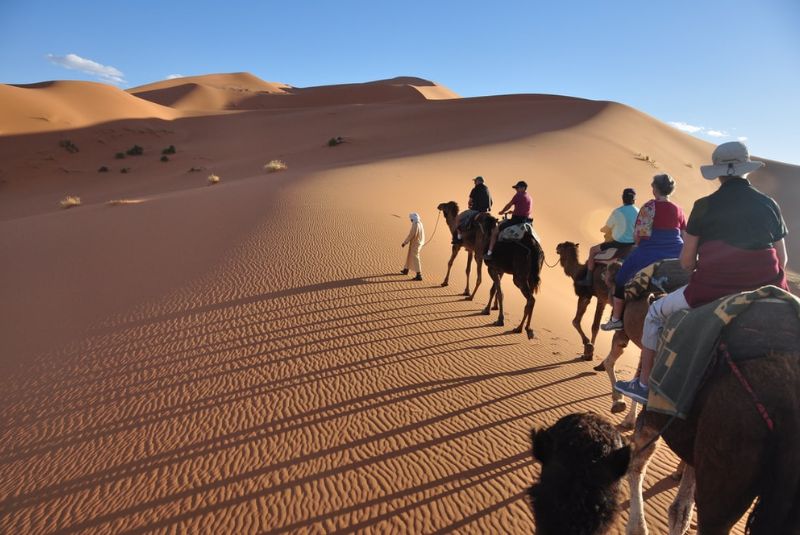
Recreational activities in the Maranjab Desert include off-road driving, walking in sand dunes, camel riding, sandboarding, motorcycling, and camping in this fascinating area. Off-road camping is allowed in the village of Aran and Bidgol, and off-road vehicles and off-road tours are provided to tourists.
If you plan to walk in the desert, be sure to accompany professional groups and have a desert map, a map of animal habitats, and a compass, as phone reception is very weak in some areas of the Maranjab Desert.
Moreover, stargazing in the desert sky and photographing it is another activity that attracts many people to the Maranjab Desert. Good equipment for observing the stars is provided on the rooftop of Maranjab Caravanserai.
| Suggestion: Lut Desert - The Hottest Place on Earth
Maranjab Desert Location
Maranjab Desert is situated at a distance of 60 kilometers from the city of Kashan, in the northern part of Aran and Bidgol County, Isfahan Province. This stunning and untouched desert extends from the north to the Namak Lake of Aran and Bidgol, from the east to the Band-e Rig Desert and the Kavir National Park, from the west to the Mesileh Desert and the Sultan and Mareh basins, and from the south to Aran and Bidgol County.
Best Time to Travel to Maranjab Desert
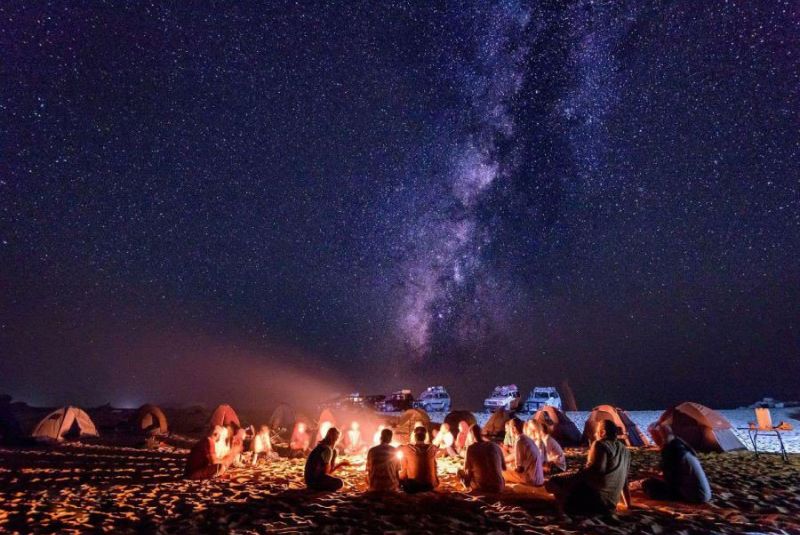
The best time to travel to the desert is in the autumn season. During this time, the desert experiences warm and dry weather during the day and cool temperatures at night.
In autumn, the Maranjab Desert weather ranges from 10 to 22 degrees Celsius, and you won't have issues with extreme heat or cold. Generally, if you plan to stay in the desert for a few days, it is advisable to visit this area in mid-autumn and late November.
| Discover: Iran's Four Seasons
How to Get to Maranjab Desert
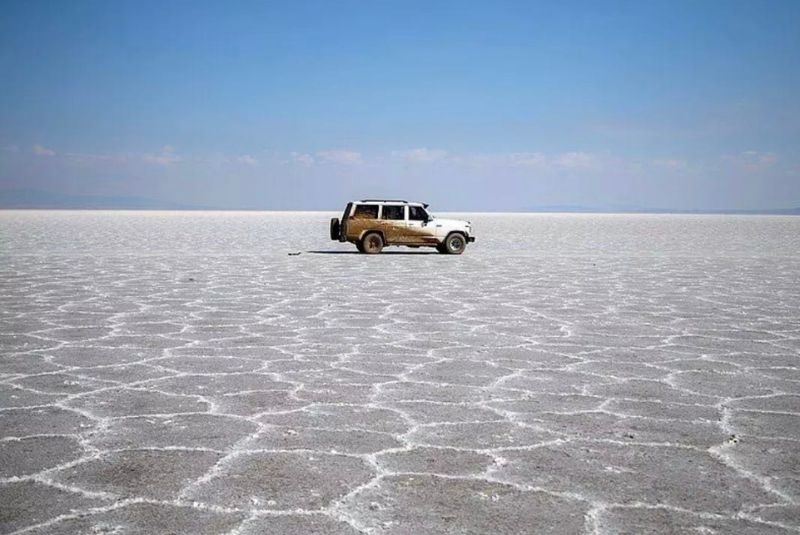
The distance from Tehran to Maranjab Desert is approximately 270 kilometers, and the distance from Aran and Bidgol to this desert is 40 kilometers.
To reach this desert, you need to move from the northern part of Aran and Bidgol city on Artesh Boulevard and enter the direct route of the desert road. After reaching the Namak Lake intersection, you should turn right and, after a short distance, you will arrive at Maranjab Camp.
It is possible to use your private vehicle on the route from Aran and Bidgol city to the desert road, but for traveling within the desert itself, off-road vehicles are a must. If you are traveling to the desert with a private car, the distance and travel time are as follows:
- Isfahan to Aran and Bidgol: 215 kilometers - about 2.5 hours
- Qom to Aran and Bidgol: 117 kilometers - 1.5 hours
- Kashan to Aran and Bidgol: 15 kilometers - 15 minutes
- Semnan to Aran and Bidgol: 386 kilometers - 4 hours
- Tehran to Aran and Bidgol: 259 kilometers - 3 hours
Address: Aran and Bidgol, Isfahan Province, Kashan, Artesh Boulevard, Maranjab Road, Maranjab Desert.
Travel Tips for a Personal Car Trip to Maranjab Desert
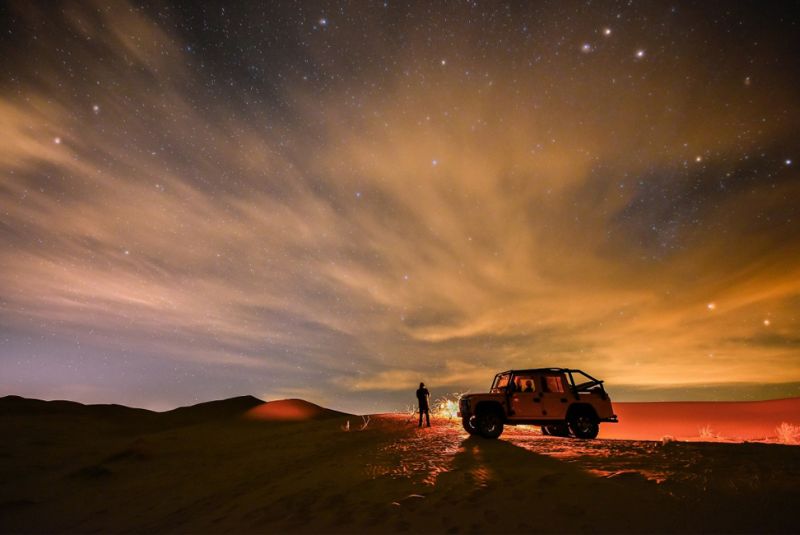
If you have decided to travel to Maranjab Desert with a personal car, you must follow some important tips. The travel tips for a personal car trip to Maranjab Desert are as follows:
- It is better to start your journey towards the desert from Aran va Bidgol County.
- Traveling with regular cars not only increases fuel consumption but also raises the risk of getting stuck on the road. Therefore, it is recommended to travel with at least two cars and carry essential tools.
- Make sure to seek assistance from local guides. If there are no guides available, never deviate from the main routes.
- Carry enough food and water for the duration of your trip, including two extra days.
- Keep in mind that mobile phones only have coverage within a 30-kilometer radius of Maranjab Caravanserai. If you encounter any problems outside this range, you must request help by burning tires.
| Read more: Darak Beach - The Intersection of Desert and Sea
Safety Tips for Traveling to Maranjab Desert

When you are in the desert, following some simple safety tips will keep you away from potential dangers. The safety tips for traveling to Maranjab Desert are as follows:
- In the desert, the risk of insect bites and encounters with animals is high. Therefore, always carry insect repellent with you.
- Be cautious of scorpions and snakes when walking on the desert sands. Wearing high-top shoes reduces the risk of snake and scorpion bites.
- Always carry a guide and a map with you during your desert trip, as the chances of getting lost are high.
- Dehydration and loss of sugar in the body can cause shock during your desert stay. Therefore, bring an adequate supply of water and sugar-containing items.
- Never travel to Maranjab Desert alone with a single car, as there is a high risk of car breakdown and getting stuck in the soft sands. Always participate in group trips for visiting deserts.
Bottom Line
The Maranjab Desert is an awe-inspiring destination that captivates visitors with its untamed beauty and unique ecosystem. Its stunning landscapes, from the shimmering salt lakes to the towering sand dunes, captivate the imagination and offer unforgettable experiences.
Whether exploring ancient caravanserais or marveling at the star-filled desert sky, each moment in Maranjab is filled with wonder. So why wait? Embark on Maranjab desert tourism with us to create memories that will last a lifetime. Book your trip now!
Share your story!
Comment below and let us know about your Experience.
Your story inspires others!


Comment
Leave a Comment